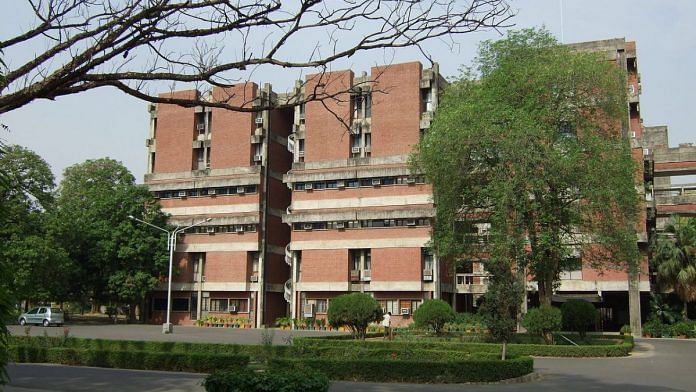New Delhi: A total of 25,593 reserved category students from the Schedule Castes (SC), Schedule Tribes (ST), Other Backward Classes (OBC), and other minority groups have dropped out of central universities and the Indian Institutes of Technology (IITs) over the last five years, Minister of State for Education Subhas Sarkar informed the Rajya Sabha Wednesday.
Between 2019 and 2023 so far, 17,545 reserved category students from central universities and 8,139 from IITs dropped out, shows the data.
The figures were shared by Sarkar in response to a question by Rajya Sabha member Sushil Kumar.
According to the response, the majority of dropouts were from postgraduate and PhD programmes, although no exact numbers were cited.
The reasons for dropping out vary by programme, the response added.
For postgraduate and PhD programmes, the main reasons cited were “offers for placement in public sector enterprises and personal preference for better opportunities elsewhere”.
For undergraduate programmes, the top causes of students withdrawing included “wrong choices filled, poor performance, and personal and medical reasons”.
In addition, the response said that a number of “corrective measures” had been initiated by the universities and IITs to minimise dropouts.
These, it said, included “appointment of advisors to monitor the academic progress of students, provision of additional classes for academically weaker students, peer-assisted learning, counselling to de-stress students, psychological motivation, and extracurricular activities”.
Experts from the IITs and central universities, who spoke to ThePrint, provided more specific insights into the reasons behind the withdrawal of reserved category students from academic programmes.
Also Read: Central universities go IIT way with endowment funds but challenges remain
Why do reserved category students drop out of IITs?
In the IITs, the dropout count for reserved category students was 1,510 in 2019, increasing to 2,152, and further climbing to 2,411 in 2021. In 2022, the dropout numbers decreased to 1,746, and finally, in 2023 so far, it is 320.
The issue of students dropping out, and not just from the reserved category, has been a persistent concern for the IITs.
Earlier this year, a meeting of the IIT Council, the governing body of the institutes, discussed the matter at length.
Family issues, problems in adjusting to the high-pressure environment in the IITs, and lack of support from peers were some of the reasons cited for the dropouts, especially in the undergraduate (UG) level, at the meeting chaired by Union Education Minister Dharmendra Pradhan.
In this meeting, it was decided that IIT-Kharagpur would “obtain inputs from all IITs in order to frame a strategy to address the issues which lead to dropouts”.
Speaking to ThePrint, Prof Dheeraj Sanghi of IIT-Kanpur attributed the high dropout rate in IITs to students leaving their master’s programme seats for government jobs.
“Earlier this year, Parliament data revealed that about 8,000 MTech students left the IITs because public sector undertakings announced their recruitment results in August, which is a month after students are allotted seats. For reserved category students, these jobs provide a safe option and they switch immediately,” he said.
“To address this, the IITs have requested for these results to be declared earlier so that deserving students get the seats,” he added.
The case of central universities
The number of reserved category students dropping out from central universities was 4,926 in 2019, 5,410 in 2020, 4,156 in 2021, 2,962 in 2022. There were no dropouts recorded for 2023.
Professors from central universities who spoke to ThePrint attributed the dropout rates among reserved category students to the economic challenges that they face. In addition to this, they say, female students face an additional pressure of getting married.
Speaking on condition of anonymity, an Allahabad University professor said that the burden of earning for the family is placed on many students from underprivileged backgrounds.
“Despite subsidised education, the pressure to become the breadwinners of the family is put on students from the deprived sections from a young age. The opportunity cost for them is very high,” he said.
According to this professor, women students tended to drop out in greater numbers than men. “They face the additional burden of marriage and family rearing,” he said.
Mithuraaj Dhusiya, a member of the academic council of Delhi University (DU) who teaches at Hans Raj college, told ThePrint that a lot needs to be done to retain students from the reserved category, both academically and socially.
“In the last five years DU has become almost like an experimental lab for the Ministry of Education’s new schemes related to syllabus and examination. None of these changes stay for more than a few years, leading to chaos,” he said. “This instability makes DU a less attractive option for students who are first-generation learners and maybe seeking stability and jobs post education.”
According to Dhusiya, the bodies that exist for the representation of SC, ST, OBC, and disabled students need to be strengthened.
“We also need to have more papers included in the syllabus of all subjects on the history of the caste system and the resulting discrimination so that students are more aware,” he added.
(Edited by Asavari Singh)
Also Read: IITs have been wooing foreign students hard for 5 yrs. They haven’t cracked the code yet



